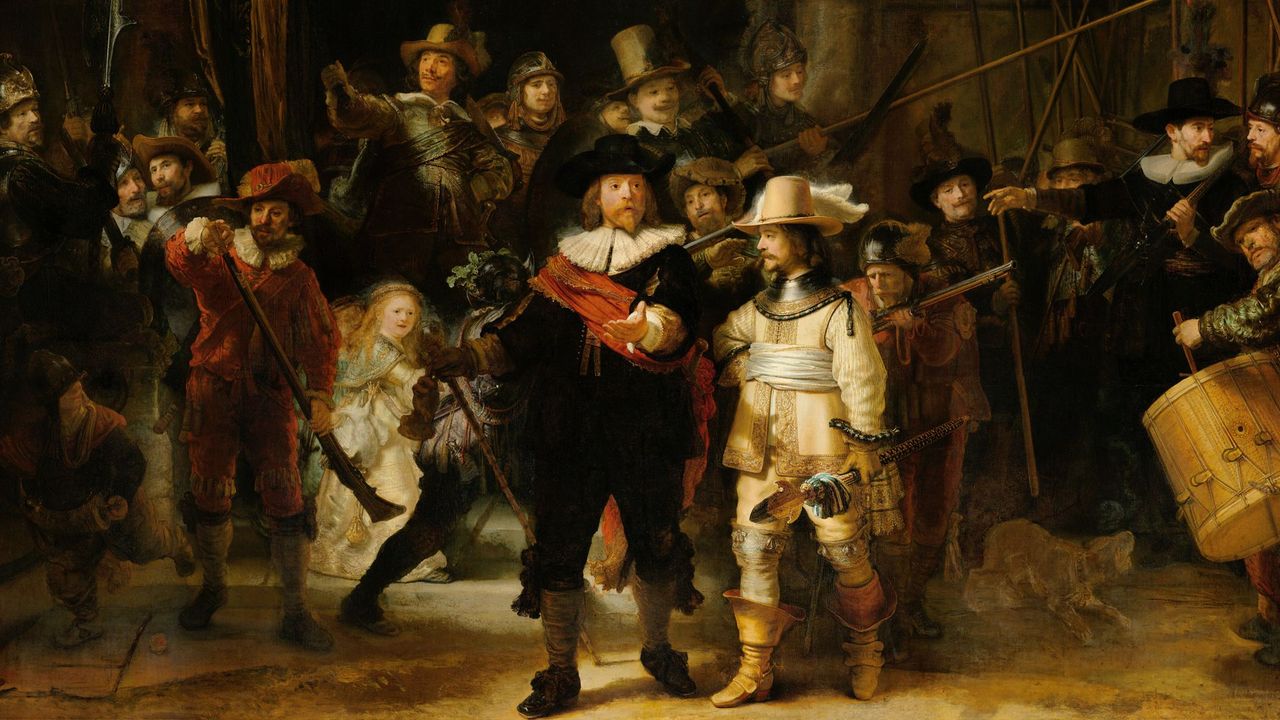
Robert Draws – The Night Watch by Rembrandt van Rijn stands as one of the most iconic paintings of the 17th century. Its dramatic use of light and shadow has captivated art lovers and critics alike for centuries. Created in 1642, this piece represents a breakthrough in group portraiture and showcases Rembrandt’s mastery of chiaroscuro, a technique that contrasts light and dark to achieve depth and drama.
Rembrandt was renowned for his use of chiaroscuro, which is evident in The Night Watch. The way light illuminates the central figures draws attention to their importance, creating a sense of movement and action. The play between light and shadow adds a theatrical element to the painting, making it feel alive and dynamic. This technique was revolutionary at the time, setting Rembrandt apart from other artists.
In The Night Watch, the figures are positioned in such a way that they appear to be stepping out of the canvas. The light, which comes from an unseen source, shines on the captain and his lieutenant, giving them prominence. The other members of the militia are bathed in a mixture of light and shadow, which suggests they are in motion, preparing for action. This innovative use of lighting created a sense of drama that was unprecedented in portraiture.
“Read about: The Triumph of Galatea by Raphael: A Masterpiece of Renaissance Art”
At first glance, The Night Watch might appear to be a simple group portrait of a militia. However, upon closer inspection, it becomes clear that Rembrandt used the composition to convey deeper meaning. The militia, led by Captain Frans Banning Cocq and his lieutenant, Willem van Ruytenburch, is portrayed as a dynamic and cohesive group.
The painting was commissioned by the group of civic guards to commemorate their new captain, but it is much more than just a record of their appearance. Rembrandt’s careful placement of the figures suggests motion, with some holding weapons, while others are preparing for action. The movement implies that the guards are on the verge of embarking on an important mission, symbolizing the vitality and readiness of the city’s defense.
The light in The Night Watch is not just a technical element but also plays a crucial narrative role. The strong contrast between light and dark emphasizes the captain and lieutenant, placing them at the forefront. This is typical of Rembrandt’s style, where light often becomes a focal point that guides the viewer’s eye to the most important elements of the composition.
The use of shadow surrounding the other figures creates a sense of mystery, leaving much to the viewer’s imagination. It is as if these figures are emerging from darkness, symbolizing both the unknown and the potential for action. The glowing light on the central figures also creates a spiritual or heroic quality, elevating them beyond mere soldiers to figures of importance and dignity.
The Night Watch revolutionized portraiture, making it much more dynamic and dramatic. Prior to this, group portraits were often static and posed, with little indication of action or movement. Rembrandt’s approach to lighting, composition, and narrative transformed the genre, influencing countless artists who followed.
The painting was also groundbreaking in how it broke away from the traditional formalities of portraiture. While other artists painted their subjects in stiff, formal poses, Rembrandt brought them to life with an energetic composition. This technique made The Night Watch a true masterpiece of its time, influencing the evolution of portraiture for generations to come.
“Read more: Unveiling the Beauty of The Birth of Venus: Botticelli’s Masterpiece”
Over the years, The Night Watch has undergone several restorations due to damage and wear. The painting has been subjected to significant restoration efforts to preserve its intricate details and vibrant colors. One of the most notable restorations occurred in the 1970s when the painting was cleaned, revealing the artist’s original brushwork and colors that had been obscured by years of grime and varnish.
Despite these challenges, The Night Watch remains in remarkable condition, continuing to captivate audiences worldwide. The painting is now housed in the Rijksmuseum in Amsterdam, where it attracts millions of visitors each year. Its preservation has allowed future generations to experience the brilliance of Rembrandt’s technique and vision.
The Night Watch occupies a unique place in Dutch culture. It is considered a national treasure. Many regard it as the Dutch Mona Lisa. The painting showcases Rembrandt’s artistic genius and Amsterdam’s civic pride. It highlights the city’s strength and resilience during the Dutch Golden Age.
This masterpiece symbolizes Dutch artistic achievement and innovation. The dramatic use of light and shadow adds depth. The narrative complexity continues to inspire artists and art lovers globally. The Night Watch represents more than technical skill. It also reflects the cultural and historical context of its creation.